![]()
Jesus' connection with India through the"Wise men from the east"
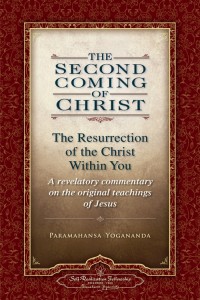
"During the unaccounted-for years of Jesus' life—the Scripture remains silent about him from approximately ages fourteen to thirty—he journeyed to India, probably traveling the well-established trade route that linked the Mediterranean with China and India. His own God-realization, reawakened and reinforced in the company of the masters and the spiritual environs of India, provided a background of the universality of truth from which he could preach a simple, open message comprehensible to the masses of his native country, yet with underlying meanings that would be appreciated in generations to come as the infancy of man's mind would mature in understanding.”
“The adoration of the Wise Men is far more significant than merely another scene
of pageantry recognizing the holy birth. It was the defining stamp of God placed
on the life of Jesus that would in future characterize his mission and
message—a reminder that Jesus was born in the Orient, an Oriental Christ; and
that his teachings bore the influence of the Eastern culture and customs.
There is a very strong tradition in India, authoritatively known amongst high
metaphysicians in tales well told and written in ancient manuscripts, that the
wise men of the East who made their way to the infant Jesus in Bethlehem were,
in fact, great sages of India. Not only did the Indian masters come to Jesus,
but he reciprocated their visit. During the unaccounted-for years of Jesus'
life—the Scripture remains silent about him from approximately ages fourteen to
thirty—he journeyed to India, probably traveling the well-established trade
route that linked the Mediterranean with China and India. His own
God-realization, reawakened and reinforced in the company of the masters and the
spiritual environs of India, provided a background of the universality of truth
from which he could preach a simple, open message comprehensible to the masses
of his native country, yet with underlying meanings that would be appreciated in
generations to come as the infancy of man's mind would mature in understanding.
As civilization takes giant strides in the proliferation of material
knowledge, man will find that the underpinnings of many of his old familiar
religious dogmas may well begin to crack and crumble. What is needed is a
reunion of the science of religion with the spirit, or inspiration, of
religion—the esoteric with the exoteric. The yoga science taught by Lord
Krishna, which provides practical methods for actual inner experience of God to
supplant the feeble life-expectancy of beliefs, and the spirit of Christ-love
and brotherhood preached by Jesus—the only sure panacea to prevent the world
from tearing itself apart by its unyielding differences—are in tandem one and
the same universal truth, taught by these two Christs of East and West, only
with a variant outward emphasis according to the times and conditions of their
respective incarnations...
It amuses me when my Western brothers ask: "Do you believe in Christ? "I always
say: "Jesus the Christ"—Jesus the divine son of man in whom was manifested the
Christ Consciousness, the Son of God. Much more than merely believing in him is
to 'know' him.
Christ has been much misinterpreted by the world. Even the most elementary
principles of his teachings have been desecrated, and their esoteric depths have
been forgotten. (p.90) They have been crucified at the hands of dogma,
prejudice, and cramped understanding. Genocidal wars have been fought, people
have been burned as witches and heretics, on the presumed authority of man-made
doctrines of Christianity. How to salvage the immortal teachings from the hands
of ignorance? We must know Jesus as an Oriental Christ, a supreme yogi who
manifested full mastery of the universal science of God-union, and thus could
speak and act as a savior with the voice and authority of God. He has been
Westernized too much. [1]
The Second Coming of Christ (The Resurrection of the Christ within You)
Paramahansa Yogananda, Self-Realization Fellowship (2008) pp. 56/90
Notes:
[1] Through the remarkable discovery of early Christian gnostic texts at Nag
Hammadi, Egypt in 1945, one may glimpse something of what was lost to
conventional Christianity during this process of"Westernization.” Elaine
Pagels, Ph.D., writes in 'The Gnostic Gospels' (New York: Vintage Books, 1981):
"The Nag Hammadi texts, and others like them, which circulated at the beginning
of the Christian era, were denounced as heresy by orthodox Christians in the
middle of the second century....But those who wrote and circulated these texts
did not regard 'themselves' as 'heretics'. Most of the writings use Christian
terminology, unmistakably related to a Jewish heritage. Many claim to offer
traditions about Jesus that are secret, hidden from 'the many' who constitute
what, in the second century, came to be called the 'catholic church'. These
Christians are now called gnostics, from the Greek word 'gnosis', usually
translated as 'knowledge'. For as those who claim to know nothing about ultimate
reality are called agnostic (literally, 'not-knowing'), the person who does
claim to know such things is called gnostic ('knowing'). But 'gnosis' is not
primarily rational knowledge....As the gnostics use the term, we could translate
it as 'insight', for 'gnosis' involves an intuitive process of knowing
oneself....[According to gnostic teachers], to know oneself, at the deepest
level, is simultaneously to know God; this is the secret of 'gnosis'....
"The"living Jesus' of these texts speaks of illusion and enlightenment, not of
sin and repentance, like the Jesus of the New Testament. Instead of coming to
save us from sin, he comes as a guide who opens access to spiritual
understanding....
"Orthodox Christians believe that Jesus is Lord and Son of God in a unique way:
he remains forever distinct from the rest of humanity whom he came to save. Yet
the gnostic 'Gospel of Thomas' relates that as soon as Thomas recognizes him,
Jesus says to Thomas that they have both received their being from the same
source: 'I am not your master. Because you have drunk, you have become drunk
from the bubbling stream which I have measured out.... He who will drink from my
mouth will become as I am: I myself shall become he, and the things that are
hidden will be revealed to him.'
"Does not such teaching—the identity of the divine and human, the concern with
illusion and enlightenment, the founder who is presented not as Lord, but as
spiritual guide—sound more Eastern than Western?....Could Hindu or Buddhist
Tradition have influenced gnosticism?....Ideas that we associate with Eastern
religions emerged in the first century through the gnostic movement in the West,
but they were suppressed and condemned by polemicists like Irenaeus.”
('Publisher's Note')
Jesus Lived in India

Holger Kersten: "It is simply of vital importance to find again the path to the sources, to the eternal and central truths of Christ's message, which has been shaken almost beyond recognition by the profane ambitions of more or less secular institutions arrogating to themselves a religious authority. This is an attempt to open a way to a new future, firmly founded in the true spiritual and religious sources of the past".
Thus begins Holger Kersten's book "Jesus Lived in India". This German book is a thorough, methodical and authoritative examination of the evidence of Christ's life beyond the Middle East before the Crucifixion and in India and elsewhere after it.
This article is a summary of Kersten's exhaustive research into Christ's travels after the Crucifixion, his arrival in India with the Mother Mary and finally his death and entombment in Kashmir. Kersten notes the many parallels of Christ's teachings with other religious and cultural traditions and suggests that at least some of these figures may have been one and the same personality. It is not possible, Kersten asserts, to disprove that Christ went to India. The current information documenting Christ's life is restricted to the gospels and the work of Church theologians. One can hardly trust these sources to be objective considering their obvious interest in maintaining the authority of their Church and its grip on the masses.
The Russian scholar, Nicolai Notovich, was the first to suggest that Christ may have gone to India. In 1887, Notovich, a Russian scholar and Orientalist, arrived in Kashmir during one of several journeys to the Orient. At the Zoji-la pass Notovich was a guest in a Buddhist monastery, where a monk told him of the bhodisattva saint called "Issa". Notovich was stunned by the remarkable parallels of Issa's teachings and martyrdom with that of Christ's life, teachings and crucifixion.
For about sixteen years, Christ travelled through Turkey, Persia, Western Europe and possibly England. He finally arrived with Mary to a place near Kashmir, where she died. After many years in Kashmir, teaching to an appreciative population, who venerated him as a great prophet, reformer and saint, he died and was buried in a tomb in Kashmir itself.
The first step in Christ's trail after the Crucifixion is found in the Persian scholar F. Mohammed's historical work "Jami-ut-tuwarik" which tells of Christ's arrival in the kingdom of Nisibis, by royal invitation. (Nisibis is today known as Nusaybin in Turkey) . This is reiterated in the Imam Abu Jafar Muhammed's "Tafsi-Ibn-i-Jamir at-tubri.” Kersten found that in both Turkey and Persia there are ancient stories of a saint called "Yuz Asaf" ("Leader of the Healed"), whose behaviour, miracles and teachings are remarkably similar to that of Christ.
The many Islamic and Hindu historical works recording local history and legends of kings, noblemen and saints of the areas thought to be travelled by Jesus also give evidence of a Christ like man; the Koran, for example, refers to Christ as "Issar". Further east, the Kurdish tribes of Eastern Anatolia have several stories describing Christ's stay in Eastern Turkey after his resurrection. These traditional legends have been ignored by the theological community.
Kersten also suggests that prior to Christ's mission in the Middle East, he may have been exposed to Buddhist teachings in Egypt. After his birth in Bethlehem, his family fled to Egypt to avoid Herod's persecution. Surprisingly some scholars now acknowledge that Buddhist schools probably existed in Alexandria long before the Christian era.
More clues are drawn from the Apocrypha. These are texts said to have been written by the Apostles but which are not officially accepted by the Church. Indeed, the Church regards them as heresy since a substantial amount of the Apocrypha directly contradicts Church dogma and theology. The Apocryphal 'Acts of Thomas', for example, tell how Christ met Thomas several times after the Crucifixion. In fact they tell us how Christ sent Thomas to teach his spirituality in India. This is corroborated by evidence found in the form of stone inscriptions at Fatehpur Sikri, near the Taj Mahal, in Northern India. They include "Agrapha", which are sayings of Christ that don't exist in the mainstream Bible. Their grammatical form is most similar to that of the Apocryphal gospel of Thomas. This is but one example giving credibility to the idea that texts not recognised by the Church hold important clues about Christ's true life and his teachings.
In tracing Christ's movements to India and beyond, Kersten also discovered that many of his teachings, which have been gradually edited out of the modern Bible were originally Eastern in nature. Principles such as karma and re-incarnation, for example, were common knowledge then, and seem to have been reaffirmed by Christ. Imagine the implications that this discovery holds for Western Christianity and its churches, who have kept Christ in their doctrinal top pockets and have constrained the entire Western culture within the narrow teachings of blind faith, organised religion and original sin!
Further clues are cited from The Apocryphal Acts of Thomas, and the Gospel of Thomas which are of Syrian origin and have been dated to the 4th Century AD, or possibly earlier. They are Gnostic Scriptures and despite the evidence indicating their authenticity, they are not given credence by mainstream theologians. In these texts Thomas tells of Christ's appearance in Andrapolis, Paphlagonia (today known as in the extreme north of Anatolia) as a guest of the King of Andrappa. There he met with Thomas who had arrived separately. It is at Andrapolis that Christ entreated Thomas to go to India to begin spreading his teachings. It seems that Christ and Mary then moved along the West coast of Turkey, proof of this could be an old stopping place for travellers called the "Home of Mary", found along the ancient silk route. From here Christ could easily have entered Europe via France. He may have even travelled as far as the British Isles, for in England there is an ancient oak tree called the "Hallowed Tree" which (says local legend) was planted by Christ himself.
In his travels through Persia (today's Iran) Christ became known as Yuz Asaf (leader of the Healed). We know this because a Kashmiri historical document confirms that Isa (the Koranic name for Christ) was in fact also known as Yuz Asaf. The Jami - uf - Tamarik, Volume II, tells that Yuz Asaf visited Masslige, where he attended the grave of Shem, Noah's son. There are various other accounts such as Agha Mustafa's "Awhali Shahaii-i-paras" that tell of Yuz Asaf's travels and teachings all over Persia. It seems that Yuz Asaf blessed Afghanistan and Pakistan with his presence also. There are for example two plains in Eastern Afghanistan near Gazni and Galalabad, bearing the name of the prophet Yuz Asaf. Again in the Apocryphal Acts of Thomas, Thomas says that he and Christ attended the Court of King Gundafor of Taxila (now Pakistan), in about 47AD, and that eventually both the King and his brother accepted Christ's teachings. Kersten claims that there are more than twenty one historical documents that bear witness to the existence of Jesus in Kashmir, where he was known also as Yuz Asaf and Issa. For example the Bhavishyat Mahapurana (volume 9 verses 17-32) contains an account of Issa-Masih (Jesus the Messiah). It describes Christ's arrival in the Kashmir region of India and his encounter with King Shalivahana, who ruled the Kushan area (39-50AD), and who entertained Christ as a guest for some time.
{Christ's life in India, after the crucifixion, challenges current Church teachings at their very foundation. The theology of Saint Paul, the major influence on modern Christianity, is empty fanaticism in the light of this discovery.
The historian Mullah Nadini (1413) also recounts a story of Yuz Asaf who was a contemporary to King Gopadatta, and confirms that he also used the name Issar, ie. Jesus. There is also much historical truth in the towns and villages of Northern India to prove that Jesus and his mother Mary spent time in the area. For instance, at the border of a small town called Mari, there is nearby a mountain called Pindi Point, upon which is an old tomb called Mai Mari da Asthan or "The final resting place of Mary". The tomb is said to be very old and local Muslims venerate it as the grave of Issa's (ie Christ's) Mother. The tomb itself is oriented East-West consistent with the Jewish tradition, despite the fact it is within a Muslim area. Assuming its antiquity, such a tomb could not be Hindu either since the Hindus contemporary to Christ cremated their dead and scattered their ashes as do Hindus today.
Following Christ's trail into Kashmir, 40km south of Srinagar, between the villages of Naugam and Nilmge is a meadow called Yuz-Marg (the meadow of Yuz Asaf, ie. Jesus). Then there is the sacred building called Aish Muqam, 60km south east of Srinagar and 12km from Bij Bihara. "Aish" says Kersten is derived from "Issa" and "Muqam" place of rest or repose. Within the Aish Muqam is a sacred relic called the 'Moses Rod' or the 'Jesus Rod', which local legend says, belonged to Moses himself. Christ is said to also have held it, perhaps to confirm his Mosaic heritage. Above the town of Srinagar is a temple known as "The Throne of Solomon", which dates back to at least 1000BC, which King Gopadatta had restored at about the same time as Christ's advent. The restoration was done by a Persian architect who personally left four inscriptions on the side steps of the temple. The third and fourth inscription read: "At this time Yuz Asaf announced his prophetic calling in Year 50 and 4" and "He is Jesus — Prophet of the Sons of Israel"! Herein lies a powerful confirmation of Kersten's theory. Kersten suggests that Christ may have travelled to the South of India also, finally returning to Kashmir to die at the age of approximately 80 years. Christ's tomb, says Kersten, lies in Srinagar's old town in a building called Rozabal. "Rozabal" is an abbreviation of Rauza Bal, meaning "tomb of a prophet". At the entrance there is an inscription explaining that Yuz Asaf is buried along with another Moslem saint. Both have gravestones which are oriented in North-South direction, according to Moslem tradition. However, through a small opening the true burial chamber can be seen, in which there is the Sarcophagus of Yuz Asaf in East-West (Jewish) orientation!
According to Professor Hassnain, who has studied this tomb, there are carved footprints on the grave stones and when closely examined, carved images of a crucifix and a rosary. The footprints of Yuz Asaf have what appear to be scars represented on both feet, if one assumes that they are crucifixion scars, then their position is consistent with the scars shown in the Turin Shroud (left foot nailed over right). Crucifixion was not practised in Asia, so it is quite possible that they were inflicted elsewhere, such as the Middle East. The tomb is called by some as "Hazrat Issa Sahib" Holger Kersten: "It is simply of vital importance to find again the path to the sources, to the eternal and central truths of Christ's message, which has been shaken almost beyond recognition by the profane ambitions of more or less secular institutions arrogating to themselves a religious authority. This is an attempt to open a way to a new future, firmly founded in the true spiritual and religious sources of the past".
Thus begins Holger Kersten's book "Jesus Lived in India". This German book is a thorough, methodical and authoritative examination of the evidence of Christ's life beyond the Middle East before the Crucifixion and in India and elsewhere after it.
This article is a summary of Kersten's exhaustive research into Christ's travels after the Crucifixion, his arrival in India with the Mother Mary and finally his death and entombment in Kashmir. Kersten notes the many parallels of Christ's teachings with other religious and cultural traditions and suggests that at least some of these figures may have been one and the same personality. It is not possible, Kersten asserts, to disprove that Christ went to India. The current information documenting Christ's life is restricted to the gospels and the work of Church theologians. One can hardly trust these sources to be objective considering their obvious interest in maintaining the authority of their Church and its grip on the masses.
The Russian scholar, Nicolai Notovich, was the first to suggest that Christ may have gone to India. In 1887, Notovich, a Russian scholar and Orientalist, arrived in Kashmir during one of several journeys to the Orient. At the Zoji-la pass Notovich was a guest in a Buddhist monastery, where a monk told him of the bhodisattva saint called "Issa". Notovich was stunned by the remarkable parallels of Issa's teachings and martyrdom with that of Christ's life, teachings and crucifixion.
For about sixteen years, Christ travelled through Turkey, Persia, Western Europe and possibly England. He finally arrived with Mary to a place near Kashmir, where she died. After many years in Kashmir, teaching to an appreciative population, who venerated him as a great prophet, reformer and saint, he died and was buried in a tomb in Kashmir itself.
The first step in Christ's trail after the Crucifixion is found in the Persian scholar F. Mohammed's historical work "Jami-ut-tuwarik" which tells of Christ's arrival in the kingdom of Nisibis, by royal invitation. (Nisibis is today known as Nusaybin in Turkey) . This is reiterated in the Imam Abu Jafar Muhammed's "Tafsi-Ibn-i-Jamir at-tubri.” Kersten found that in both Turkey and Persia there are ancient stories of a saint called "Yuz Asaf" ("Leader of the Healed"), whose behaviour, miracles and teachings are remarkably similar to that of Christ.
The many Islamic and Hindu historical works recording local history and legends of kings, noblemen and saints of the areas thought to be travelled by Jesus also give evidence of a Christ like man; the Koran, for example, refers to Christ as "Issar". Further east, the Kurdish tribes of Eastern Anatolia have several stories describing Christ's stay in Eastern Turkey after his resurrection. These traditional legends have been ignored by the theological community.
Kersten also suggests that prior to Christ's mission in the Middle East, he may have been exposed to Buddhist teachings in Egypt. After his birth in Bethlehem, his family fled to Egypt to avoid Herod's persecution. Surprisingly some scholars now acknowledge that Buddhist schools probably existed in Alexandria long before the Christian era.
More clues are drawn from the Apocrypha. These are texts said to have been written by the Apostles but which are not officially accepted by the Church. Indeed, the Church regards them as heresy since a substantial amount of the Apocrypha directly contradicts Church dogma and theology. The Apocryphal 'Acts of Thomas', for example, tell how Christ met Thomas several times after the Crucifixion. In fact they tell us how Christ sent Thomas to teach his spirituality in India. This is corroborated by evidence found in the form of stone inscriptions at Fatehpur Sikri, near the Taj Mahal, in Northern India. They include "Agrapha", which are sayings of Christ that don't exist in the mainstream Bible. Their grammatical form is most similar to that of the Apocryphal gospel of Thomas. This is but one example giving credibility to the idea that texts not recognised by the Church hold important clues about Christ's true life and his teachings.
In tracing Christ's movements to India and beyond, Kersten also discovered that many of his teachings, which have been gradually edited out of the modern Bible were originally Eastern in nature. Principles such as karma and re-incarnation, for example, were common knowledge then, and seem to have been reaffirmed by Christ. Imagine the implications that this discovery holds for Western Christianity and its churches, who have kept Christ in their doctrinal top pockets and have constrained the entire Western culture within the narrow teachings of blind faith, organised religion and original sin!
Further clues are cited from The Apocryphal Acts of Thomas, and the Gospel of Thomas which are of Syrian origin and have been dated to the 4th Century AD, or possibly earlier. They are Gnostic Scriptures and despite the evidence indicating their authenticity, they are not given credence by mainstream theologians. In these texts Thomas tells of Christ's appearance in Andrapolis, Paphlagonia (today known as in the extreme north of Anatolia) as a guest of the King of Andrappa. There he met with Thomas who had arrived separately. It is at Andrapolis that Christ entreated Thomas to go to India to begin spreading his teachings. It seems that Christ and Mary then moved along the West coast of Turkey, proof of this could be an old stopping place for travellers called the "Home of Mary", found along the ancient silk route. From here Christ could easily have entered Europe via France. He may have even travelled as far as the British Isles, for in England there is an ancient oak tree called the "Hallowed Tree" which (says local legend) was planted by Christ himself.
In his travels through Persia (today's Iran) Christ became known as Yuz Asaf (leader of the Healed). We know this because a Kashmiri historical document confirms that Isa (the Koranic name for Christ) was in fact also known as Yuz Asaf. The Jami - uf - Tamarik, Volume II, tells that Yuz Asaf visited Masslige, where he attended the grave of Shem, Noah's son. There are various other accounts such as Agha Mustafa's "Awhali Shahaii-i-paras" that tell of Yuz Asaf's travels and teachings all over Persia. It seems that Yuz Asaf blessed Afghanistan and Pakistan with his presence also. There are for example two plains in Eastern Afghanistan near Gazni and Galalabad, bearing the name of the prophet Yuz Asaf. Again in the Apocryphal Acts of Thomas, Thomas says that he and Christ attended the Court of King Gundafor of Taxila (now Pakistan), in about 47AD, and that eventually both the King and his brother accepted Christ's teachings. Kersten claims that there are more than twenty one historical documents that bear witness to the existence of Jesus in Kashmir, where he was known also as Yuz Asaf and Issa. For example the Bhavishyat Mahapurana (volume 9 verses 17-32) contains an account of Issa-Masih (Jesus the Messiah). It describes Christ's arrival in the Kashmir region of India and his encounter with King Shalivahana, who ruled the Kushan area (39-50AD), and who entertained Christ as a guest for some time.
{Christ's life in India, after the crucifixion, challenges current Church teachings at their very foundation. The theology of Saint Paul, the major influence on modern Christianity, is empty fanaticism in the light of this discovery.
The historian Mullah Nadini (1413) also recounts a story of Yuz Asaf who was a contemporary to King Gopadatta, and confirms that he also used the name Issar, ie. Jesus. There is also much historical truth in the towns and villages of Northern India to prove that Jesus and his mother Mary spent time in the area. For instance, at the border of a small town called Mari, there is nearby a mountain called Pindi Point, upon which is an old tomb called Mai Mari da Asthan or "The final resting place of Mary". The tomb is said to be very old and local Muslims venerate it as the grave of Issa's (ie Christ's) Mother. The tomb itself is oriented East-West consistent with the Jewish tradition, despite the fact it is within a Muslim area. Assuming its antiquity, such a tomb could not be Hindu either since the Hindus contemporary to Christ cremated their dead and scattered their ashes as do Hindus today.
Following Christ's trail into Kashmir, 40km south of Srinagar, between the villages of Naugam and Nilmge is a meadow called Yuz-Marg (the meadow of Yuz Asaf, ie. Jesus). Then there is the sacred building called Aish Muqam, 60km south east of Srinagar and 12km from Bij Bihara. "Aish" says Kersten is derived from "Issa" and "Muqam" place of rest or repose. Within the Aish Muqam is a sacred relic called the 'Moses Rod' or the 'Jesus Rod', which local legend says, belonged to Moses himself. Christ is said to also have held it, perhaps to confirm his Mosaic heritage. Above the town of Srinagar is a temple known as "The Throne of Solomon", which dates back to at least 1000BC, which King Gopadatta had restored at about the same time as Christ's advent. The restoration was done by a Persian architect who personally left four inscriptions on the side steps of the temple. The third and fourth inscription read: "At this time Yuz Asaf announced his prophetic calling in Year 50 and 4" and "He is Jesus — Prophet of the Sons of Israel"! Herein lies a powerful confirmation of Kersten's theory. Kersten suggests that Christ may have travelled to the South of India also, finally returning to Kashmir to die at the age of approximately 80 years. Christ's tomb, says Kersten, lies in Srinagar's old town in a building called Rozabal. "Rozabal" is an abbreviation of Rauza Bal, meaning "tomb of a prophet". At the entrance there is an inscription explaining that Yuz Asaf is buried along with another Moslem saint. Both have gravestones which are oriented in North-South direction, according to Moslem tradition. However, through a small opening the true burial chamber can be seen, in which there is the Sarcophagus of Yuz Asaf in East-West (Jewish) orientation!
According to Professor Hassnain, who has studied this tomb, there are carved footprints on the grave stones and when closely examined, carved images of a crucifix and a rosary. The footprints of Yuz Asaf have what appear to be scars represented on both feet, if one assumes that they are crucifixion scars, then their position is consistent with the scars shown in the Turin Shroud (left foot nailed over right). Crucifixion was not practised in Asia, so it is quite possible that they were inflicted elsewhere, such as the Middle East. The tomb is called by some as "Hazrat Issa Sahib" or "Tomb of the Lord Master Jesus". Ancient records acknowledge the existence of the tomb as long ago as 112AD. The Grand Mufti, a prominent Muslim Cleric, himself has confirmed that Hazrat Isa Sahib is indeed the tomb of Yuz Asaf!
Thus Kersten deduces that the tomb of Jesus Christ Himself is in Kashmir!
The implications of Kersten's discovery are monumental. Christ's life in India, after the crucifixion, challenges current Church teachings at their very foundation. The theology of Saint Paul, the major influence on modern Christianity, is empty fanaticism in the light of this discovery. Threatened also are the doctrines of obedience to the Church, original sin, salvation through blind faith and the non-existence of reincarnation, etc. Yet these ideas underlie the morality and ethics, (or lack of them), that govern the entire Western social structure, from the legal system to medical health care schemes. It is no wonder that the modern Churches and their secular interests refuse to consider such a proposition as Kersten's!
The Synopsis of "Jesus Lived In India" by Holger Kersten was written by Dr Ramesh Manocha & Anna Potts.
Tourists flock to 'Jesus' shrine
Last updated on: May 11, 2010 22:38 IST
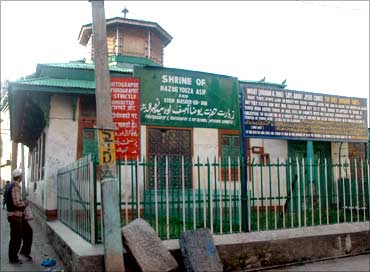
Look at the picture carefully. This nondescript Muslim shrine in Kashmir has shot into the international limelight after many believers claimed it was where Jesus Christ was laid to rest. Inquisitive visitors-- mostly Westerners--have started flocking to the shrine, forcing the caretakers to close down the religious structure. Rediff.com's Mukhtar Ahmad travels to Khanyar in Srinagar, in search of some spiritual answers.
Where did Jesus spend his last days? Had he been to India? Had he been buried in Kashmir?
There are several versions on Jesus' India sojourn. Some books argue Jesus did spend as many as 16 years in India, becoming a disciple of Buddhism. But many dispute the entire version, saying there has never been conclusive evidence on Jesus' visit to India.
The old debate or controversy resurfaced after Rozabal shrine of Sufi saint Yuz Asaf at Srinagar in Jammu and Kashmir banned visitors and believers alike from entering the sanctum sanctorum. It was at the Rozabal shrine, many believe, Jesus was laid to rest. However, there has not been any conclusive proof to substantiate the claim.
The shrine's move comes after some believers wanted to exhume the remains to obtain carbon dating and get a DNA done.
"Some Christians claim it is the grave of Jesus and they had approached us with a request to exhume the remains for DNA testing. But, we refused," Mohammad Amin Ringshawl, the shrine's caretaker, told rediff.com.
Image: The disputed structure in Srinagar
Photographs: Umar Ganai
RediffNews
Web (Extracted 2018-01-25)
'The tomb predates Islam'
Last updated on: May 11, 2010 22:38 IST
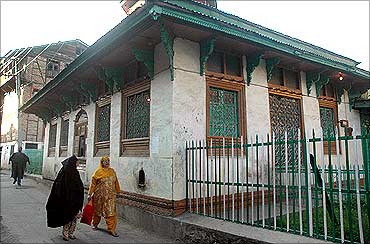
The graves of saints are covered with green cloth embroidered with verses from the Holy Quran and local Muslims often stop at the shrine to say prayers.
In his book, Aziz Kashmiri writes, "Kashmiri history books tell us that Yus Asaf came from abroad. He was a prophet and a messenger. He came from Israel. He came to spread his teachings. He lived and died here. Yus Asaf was Issa. He was Jesus.”
"The meaning of Yus Asaf is, The Healer. Another meaning is The Shepherd the one who teaches others. Our history confirms that Issa was known as Yus Assaf, here in Kashmir.”
"The footprints were carved as a sign. The scars are clearly visible, sustained as he was nailed to the cross. They show that this is the same person who came here from Israel.
"And that he lived and died here. You won't find any footprints like these anywhere else in Kashmir.”
Meanwhile, in an interview to Times of India recently, Suzanne refuted allegations that she had attempted to remove anything from the tomb, or dig it up.
"I can't imagine who started those rumours or why," she said and maintained that the belief that there is a Muslim saint in the same tomb is untrue. "The tomb predates Islam and could never be a Muslim tomb,"she was quoted as saying.
RediffNews
Web (Extracted 2018-01-25)
No entry now to the shrine
Last updated on: May 11, 2010 22:38 IST

As always in such cases, the ban has had a domino effect. The shrine had a mention in The Lonely Planet, a worldwide guide for travellers. As the word spread, inquisitive visitors started flocking the shrine.
Angered by the sudden "interest" being shown by foreigners in the shrine, the authorities banned people from entering the shrine.
Incidentally, the man -- Aziz Kashmiri, senior journalist-- who first wrote that Jesus was buried in Kashmir-- passed away recently, rekindling memories of the controversy and interest associated with the grave in the Khanyar locality.
Aziz Kashmiri, the editor of a local Urdu daily Roshini, was the first to advance the theory in his book Christ In Kashmir published in 1973.
The shrine shot into limelight following the publication of the book underpinning the theory "that Jesus survived crucifixion and migrated to Kashmir'.
Image: The disputed structure in Srinagar
Photographs: Umar Ganai
RediffNews
Web (Extracted 2018-01-25)
.jpg)
1970) that commences the Resurrection and
fulfills the Savior's 2000-year-old promise of
life eternal in the Kingdom of God. However,
thousands of Her disciples—led by leaders
having no faith or conviction—have refused
to declare the Good News (This Gospel of the
Kingdom shall be preached in the entire world
for a witness unto all nations. Matthew 24:1)
and Al-Naba, (The Great Announcement of
Al-Qiyamah [The Resurrection] surah 78:1-5)
to humanity since. And May 5, 2020 will mark
five decades of an unprecedented collective
rejection of the Good News by Her disciples
(Sahaja Yogis), a blasphemy that Jesus clearly
warned 2000-years ago: "And whoever speaks
a word against the Son of Man will be forgiven,
but whoever speaks against the Holy Spirit will
not be forgiven, either in this age or in the age
to come.” (Matthew 12:32).”
He was discussing and talking to them but His parents were perhaps, were frightened that these people might kill Him so they brought him to India. He came to India for wisdom. I don't know where is that wisdom missing now from Indians, but must be that country was full of wisdom when He came and stayed in India and we have lots of memories about Him, even the King Shalivahana met Him, is described in his book that he met a man in Kashmir who was very saintly and he asked Him, 'What's your name?' He said, 'My name is Issa.' See now, imagine - Issa. 'I' is the word used in the Vedas for the Adi Shakti. 'Sa' means with. He said 'My name is Issa.' He said, 'From what country do You come?' He said, 'I come from a country which is foreign to Me and this is My country.'
The Paraclete Shri Mataji
Christmas Puja, Ganapatipule, India—December 25, 1992
"There are lots of theories about His death, but actually He resurrected Himself and then He went down to India and settled there with His Mother. The after-period of His Resurrection is not described in any books as such, but in the, one of the Puranas, written about Shalivahana, one of the kings of dynasty I belong to, has met Christ in Kashmir, and he asked Him, "What's Your name?” He said, 'My name is Issa.' And he then he asked Him also that: 'From which country You come, which place?' He said: 'I come from a country which is foreign to you and to Me, and now I'm here in My own country.'"
The Paraclete Shri Mataji
Easter Puja, Sydney, Australia—March 31, 1991
Apokalypsis: The fulfillment of eschatological instruction by the Paraclete in the Age to Come promised by Jesus at the Last Supper
An apocalypse (Greek: apokalypsis meaning “an uncovering”) is in religious contexts knowledge or revelation, a disclosure of something hidden, “a vision of heavenly secrets that can make sense of earthly realities.” (Ehrman 2014, 59)
“An apocalypse (Ancient Greek: apokalypsis ... literally meaning "an uncovering") is a disclosure or revelation of great knowledge. In religious and occult concepts, an apocalypse usually discloses something very important that was hidden or provides what Bart Ehrman has termed, "A vision of heavenly secrets that can make sense of earthly realities". Historically, the term has a heavy religious connotation as commonly seen in the prophetic revelations of eschatology obtained through dreams or spiritual visions.” Wikipedia 2021-01-09

Total number of recorded talks 3058: Public Programs 1178, Pujas 651, and other (private conversations) 1249
“The Paraclete will come (15:26; 16:7, 8, 13) as Jesus has come into the world (5:43; 16:28; 18:37)... The Paraclete will take the things of Christ (the things that are mine, ek tou emou) and declare them (16:14-15). Bishop Fison describes the humility of the Spirit, 'The true Holy Spirit of God does not advertise Herself: She effaces Herself and advertises Jesus.' ...
It is by the outgoing activity of the Spirit that the divine life communicates itself in and to the creation. The Spirit is God-in-relations. The Paraclete is the divine self-expression which will be and abide with you, and be in you (14:16-17). The Spirit's work is described in terms of utterance: teach you, didasko (14:26), remind you, hypomimnesko (14:26), testify, martyro (15:26), prove wrong, elencho (16:8), guide into truth, hodego (16:13), speak, laleo (16:13, twice), declare, anangello (16:13, 14, 15). The johannine terms describe verbal actions which intend a response in others who will receive (lambano), see (theoreo), or know (ginosko) the Spirit. Such speech-terms link the Spirit with the divine Word. The Spirit's initiatives imply God's personal engagement with humanity. The Spirit comes to be with others; the teaching Spirit implies a community of learners; forgetful persons need a prompter to remind them; one testifies expecting heed to be paid; one speaks and declares in order to be heard. The articulate Spirit is the correlative of the listening, Spirit-informed community.
The final Paraclete passage closes with a threefold repetition of the verb she will declare (anangello), 16:13-15. The Spirit will declare the things that are to come (v.13), and she will declare what is Christ's (vv. 14, 15). The things of Christ are a message that must be heralded...
The intention of the Spirit of truth is the restoration of an alienated, deceived humanity... The teaching role of the Paraclete tends to be remembered as a major emphasis of the Farewell Discourses, yet only 14:26 says She will teach you all things. (Teaching is, however, implied when 16:13-15 says that the Spirit will guide you into all truth, and will speak and declare.) Franz Mussner remarks that the word used in 14:26, didaskein, "means literally 'teach, instruct,' but in John it nearly always means to reveal.” (Stevick 2011, 292-7)
The Holy Spirit as feminine: Early Christian testimonies and their interpretation,
Johannes van Oort, Radboud University, Nijmegen, The Netherlands
Department of Church History and Church Polity, Faculty of Theology, University of Pretoria, South Africa
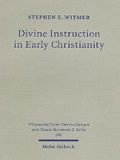
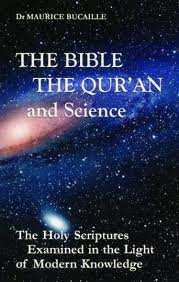
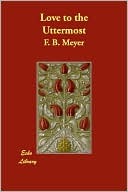
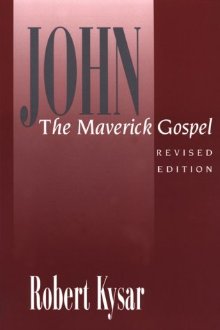
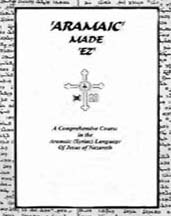
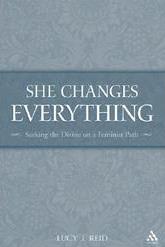
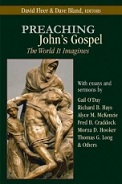

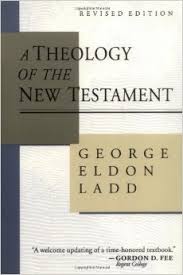
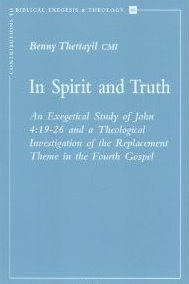


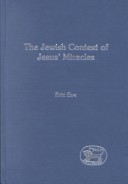
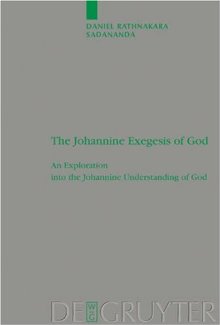

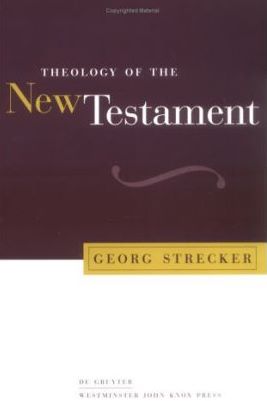
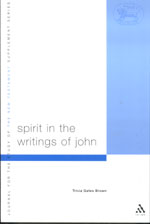
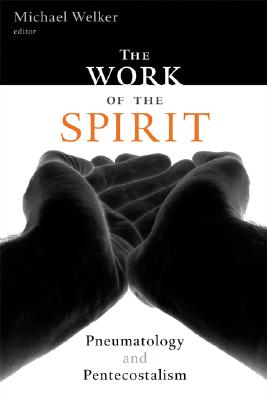
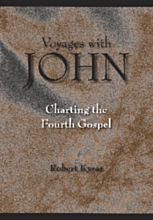


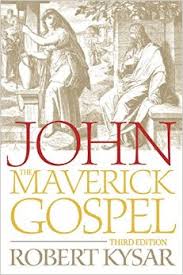
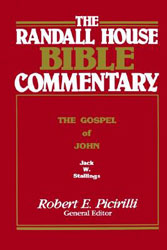
 “The teaching of the Paraclete, as the continuation of Jesus' teaching, must also be understood as the fulfillment of the promise of eschatological divine instruction.”
“The teaching of the Paraclete, as the continuation of Jesus' teaching, must also be understood as the fulfillment of the promise of eschatological divine instruction.”Stephen E. Witmer, Divine instruction in Early Christianity
“Jesus therefore predicts that God will later send a human being to Earth to take up the role defined by John .i.e. to be a prophet who hears God's words and repeats his message to man.”
M. Bucaille, The Bible, the Qur'n, and Science
“And when Jesus foreannounced another Comforter, He must have intended a Person as distinct and helpful as He had been.”
F. B. Meyer, Love to the Utmost
“The Paraclete has a twofold function: to communicate Christ to believers and, to put the world on trial.”
Robert Kysar, John The Meverick Gospel
“But She—the Spirit, the Paraclete...—will teach you everything.”
Danny Mahar, Aramaic Made EZ)
“Grammatical nonsense but evidence of the theological desire to defeminize the Divine.”
Lucy Reid, She Changes Everything
“The functions of the Paraclete spelled out in verses 13-15... are all acts of open and bold speaking in the highest degree.”
David Fleer, Preaching John's Gospel
“The reaction of the world to the Paraclete will be much the same as the world's reaction was to Jesus.”
Berard L. Marthaler, The Creed: The Apostolic Faith in Contemporary Theology
Bultmann calls the “coming of the Redeemer an 'eschatological event,' 'the turning-point of the ages.”
G. Ladd, A Theology of the New Testament
“The Paraclete equated with the Holy Spirit, is the only mediator of the word of the exalted Christ.”
Benny Thettayil, In Spirit and Truth
“The divine Paraclete, and no lessor agency, must show the world how wrong it was about him who was in the right.”
Daniel B. Stevick , Jesus and His Own: A Commentary on John 13-17
Stephen Smalley asserts that “The Spirit-Paraclete ... in John's Gospel is understood as personal, indeed, as a person.”
Marianne Thompson, The God of the Gospel of John
“The Messiah will come and the great age of salvation will dawn (for the pious).”
Eric Eve, The Jewish context of Jesus' Miracles
“The remembrance is to relive and re-enact the Christ event, to bring about new eschatological decision in time and space.”
Daniel Rathnakara Sadananda, The Johannine Exegesis of God
“The Spirit acts in such an international situation as the revealer of 'judgment' on the powers that rule the world.”
Michael Welker, God the Spirit
The Paraclete's “Appearance means that sin, righteousness, and judgment will be revealed.”
Georg Strecker, Theology of the New Testament
“While the Spirit-Paraclete is the true broker, the brokers they rely on are impostors.”
T. G. Brown, Spirit in the writings of John
“The pneumatological activity ... of the Paraclete ... may most helpfully be considered in terms of the salvific working of the hidden Spirit.”
Michael Welker, The work of the Spirit
“The pneuma is the peculiar power by which the word becomes the words of eternal life.”
Robert Kysar, Voyages with John
“The gift of peace, therefore, is intimately associated with the gift of the Spirit-Paraclete.”
Francis J. Moloney, The Gospel of John
“This utopian hope, even when modestly expressed, links Jesus and the prophets to a much wider history of human longing.”
Harvey Cox, The Future of Faith
“Because of the presence of the Paraclete in the life of the believer, the blessings of the end-times—the eschaton—are already present.”
Robert Kysar, John
“They are going, by the Holy Spirit's power, to be part of the greatest miracle of all, bringing men to salvation.”
R. Picirilli, The Randall House Bible Commentary
“The Kingdom of God stands as a comprehensive term for all that the messianic salvation included... is something to be sought here and now (Mt. 6:33) and to be received as children receive a gift (Mk. 10:15 = Lk. 18:16-17).”
G. Ladd, A Theology of the New Testament
Disclaimer: Our material may be copied, printed and distributed by referring to this site. This site also contains copyrighted material the use of which has not always been specifically authorized by the copyright owner. We are making such material available to our readers under the education and research provisions of "fair use" in an effort to advance freedom of inquiry for a better understanding of religious, spiritual and inter-faith issues. The material on this site is distributed without profit. If you wish to use copyrighted material for purposes other than “fair use” you must request permission from the copyright owner.